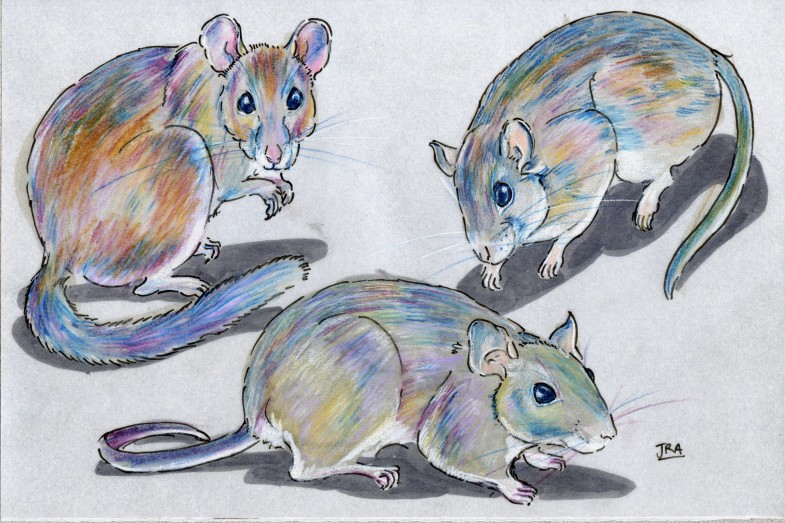Rats Three Ways (Neotoma spp.)
Here are three rats for you! They’re in the wood rat or pack rat genus, Neotoma. Clockwise from the top left, we have N. cinerea (bushy-tailed wood rat), N. floridana (eastern wood rat), and N. lepida (desert wood rat). Wood rats are also sometimes called trade rats. Mammalian Species quotes a 1946 guide to the mammals of Nevada:
“It is supposed that when one of these rats carrying an object of its fancy comes to another more attractive object, it drops the first and continues on its way with the second. If the second object be the watch of a camper, who in the morning finds a piece of old bone where the watch lay when the camper went to sleep the evening before, he will think the name trade rat appropriate.”
Just, you know, hypothetically, right?
There are two words related to wood rats that you may not know. Both could prove useful in describing, say, someone’s housekeeping. Middens means a pile of bodily waste or a dunghill. Amberat is a deceptively beautiful word meaning crystallized rat urine. (I don’t know if it’s a portmanteau from amber and rat, but I hope so. I really love this word.) Here, in a book about the Grand Canyon, is a chapter all about amberat, and here is a photograph of it at UtahCaver.com. Apparently, it has a red-gold color and can be built up to several inches thick. It may or may not have a sweet smell.
Amberat helps fossilize wood-rat middens for later examination by interested parties. Archaeologists have found rodent middens that are 50,000 years old. The rats use the same middens for generations, so there’s all kinds of intriguing stuff in there. At Mesa Verde, they’ve found middens that show signs of exposure to smoke, suggesting that the wood rats coexisted with the Anasazi.


I suppose “amberat” must be a portmanteau although unfortunately it doesn’t seem to be in the OED. I wonder if it comes by way of “ambergris” the “wax-like substance of marbled ashy colour, found floating in tropical seas, and as a morbid secretion in the intestines of the sperm-whale. It is odoriferous and used in perfumery; formerly in cookery.” (OED)
My favorite amberat anecdote is the one about the Manly expedition, a group of settlers that took the packrat middens they had found for native american food caches:
“It was evidently food of some sort, and we found it sweet but sickish, and those who were so hungry as to break up one of the balls and divide it among the others, making a good meal of it, were a little troubled with nausea afterward.”
Manly felt guilty afterwards for stealing food from the natives!!
As far as I can tell, amberat does indeed come from the words amber and rat smooshed together. The earliest reference I found was from the 1950s.
That’s disgusting about the Manly expedition! Poor guys. I wonder if they ever learned what it was.